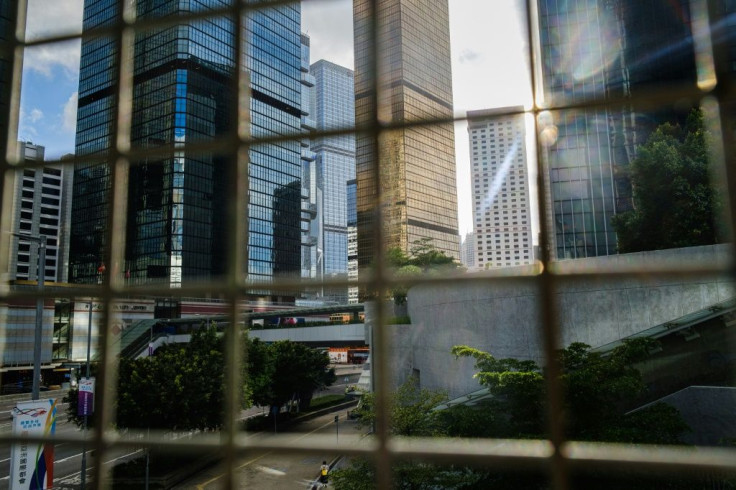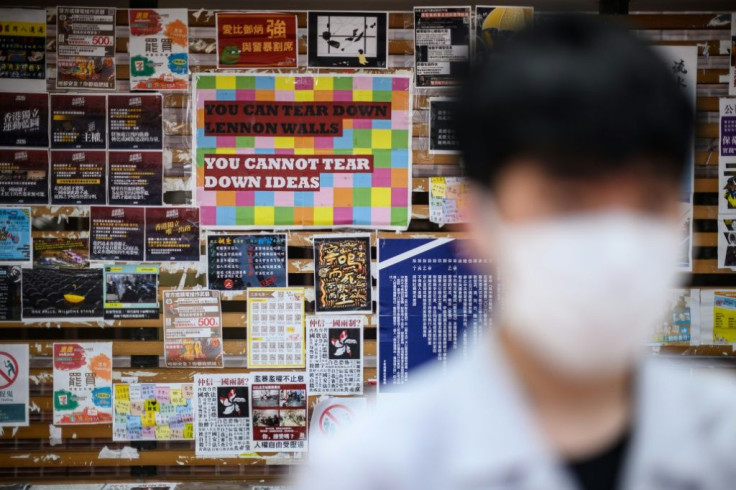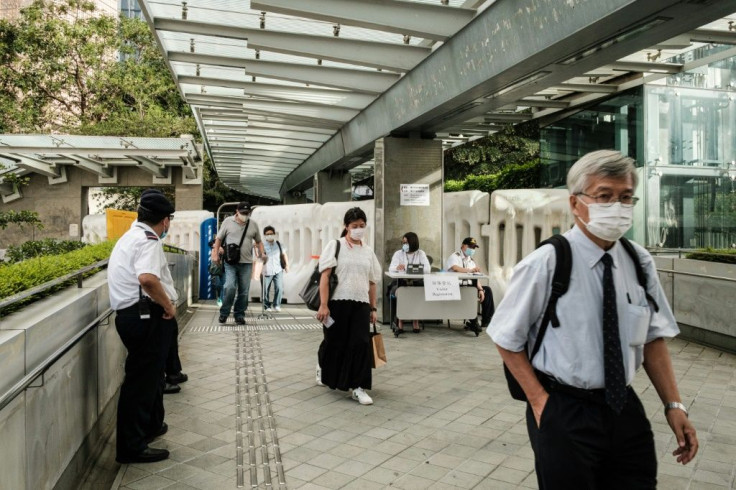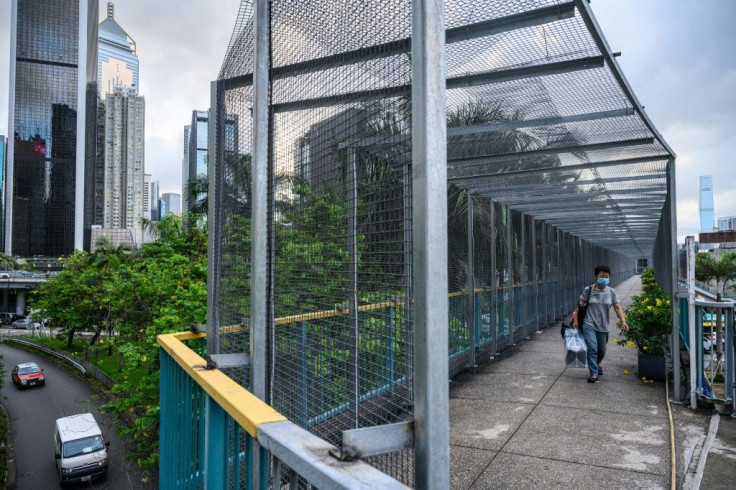Protests Leave Permanent Imprint On Hong Kong's Streets

Torn up paving stones filled-in with concrete, cages erected over bridges and security guards on campus entrances -- protests have left a permanent imprint on Hong Kong's streets after a year of tumult.
One year ago, on June 9, a record-breaking crowd of some one million marched through the international finance hub demanding the withdrawal of an unpopular bill allowing extraditions to the authoritarian mainland.
As city leaders dug in, the movement snowballed into a popular revolt against Beijing's rule with huge rallies and clashes with police raging for seven straight months.

Mass arrests and a coronavirus ban on public gatherings have enforced calm for much of this year and Beijing is now planning to impose a new law for the finance hub targeting subversion, secession, terrorism and foreign interference.
But signs of the unrest can still be seen throughout the metropolis.

Hong Kong Polytechnic University was the scene of the most sustained clashes between protesters and police back in November.

Now the imposing red brick campus is ringed by yellow water-filled security barriers and guards who check the identities of those entering.
Similar barriers have been thrown up around Hong Kong's legislature, neighbourhood police stations, government ministries and Beijing's offices in the city.

Police now rarely patrol in less than groups of four, some swapping their blue uniforms for green riot overalls and helmets.
Many Chinese owned companies and businesses deemed sympathetic to Beijing have kept the wooden protective hoarding over their storefronts after dozens of shops were trashed by protesters.


All across the city, paving that was dug up to throw at police or delay their advances have been filled in with concrete, some of it daubed with anti-government slogans before it had time to dry.
And many pedestrian bridges over busy roads are clad in metal cages after protesters disrupted highways by throwing objects from above.
"Throughout the 2019 protests, protesters 'deconstructed' the city's fabric, subverting the urban infrastructure to put it in service of their protest," Antony Dapiran, a Hong Kong lawyer who has written books about the city's protest movements, told AFP.
"The Hong Kong government, when it became familiar with the protesters' tactics, begun to take countermeasures, stripping the city of the urban hardware that the protesters so readily recontextualised for the purposes of their barricade resistance," he added.
Some of that hardware has begun returning.
For months, streets were largely stripped of metal security barriers separating the busy roads from the pavements.
Protesters became expert at using wrenches and drills to dismantle the structures in seconds to add to their barricades.
But in recent weeks, new barriers have sprung up, their shiny metal frames yet to be weathered by the sub-tropical heat.
So-called "Lennon Walls" -- filled with pro-democracy posters and colourful notes -- remain standing in some neighbourhoods where anti-government sentiment runs high.
Others have been scrubbed down and painted over, often by municipal workers playing whack-a-mole with the graffiti, others by gangs of pro-government supporters.
But Dapiran said scrubbing people's memories will be much harder.
"The Lennon Wall was transformed from a site to an idea, an instrument and expression of protest, and became as a result significantly more powerful and enduring -- and, ultimately, indestructible," he said.
© Copyright AFP {{Year}}. All rights reserved.





















